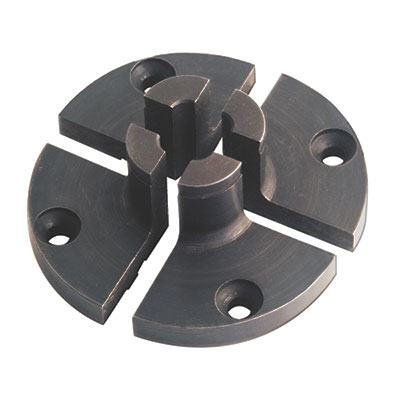leehljp
Member Liaison
Today, For the first time, I experienced vibration when drilling on the lathe. I have read occasionally of others in different situations having vibration when drilling on the lathe, but did not have an answer since I had never experienced it. I will admit that I am quite obsessive - that everything be perfect before I drill into a blank.
Today, I needed to make 4 finials for a canopy on a doll bed (repair for a lady to give to her grand daughter). I was a little pressed for time so I cut a 3"x3"x 4" walnut into quarters - 1.5" square by 4 inch. I cut them down to 3 inches long, as that is all I needed. The four 1.5 inch square blocks were not perfectly Square as I was in a hurry and didn't see the need for perfectly square blanks. I really didn't think that was absolutely necessary. For some reason I decided to drill a 5/16" hole first - that I would glue a dowel into the finial, use the dowel to fit through the canopy and into the bed posts. Well, the 1.5 (1 1/2") square blocks were not perfectly square. I put the first block on in a chuck, tightened it and turned it on. My lazy thinking was the drill bit will find the center. BOY Was I wrong. it found the center but turning at 2000rpm and the blank being just a tad out of square, even though tight in the chuck, caused all kinds of vibration. AT first I thought the tail stock was not locked down tight. But it was. It did not vibrate when the drill bit was not drilling, an I am guessing that the weight of the lathe overcame that vibration, but when I put the drill bit into the out of balanced block of wood, the tail stock and head stock fought each other.
For the next finial, I turned it down, centered it and then drilled and did not have a problem. The next two did fine also.
I learned that un-square/not totally centered blanks are being drilled, for me it was enough to cause vibration in drilling on the lathe.
Just wanted to pass along my experience on this.
And just this past week, there was a thread about turning round before drilling. I don't usually do that but I make sure my blanks are square or balanced before drilling. Being round before drilling would do the same thing.
Am I missing something?
Today, I needed to make 4 finials for a canopy on a doll bed (repair for a lady to give to her grand daughter). I was a little pressed for time so I cut a 3"x3"x 4" walnut into quarters - 1.5" square by 4 inch. I cut them down to 3 inches long, as that is all I needed. The four 1.5 inch square blocks were not perfectly Square as I was in a hurry and didn't see the need for perfectly square blanks. I really didn't think that was absolutely necessary. For some reason I decided to drill a 5/16" hole first - that I would glue a dowel into the finial, use the dowel to fit through the canopy and into the bed posts. Well, the 1.5 (1 1/2") square blocks were not perfectly square. I put the first block on in a chuck, tightened it and turned it on. My lazy thinking was the drill bit will find the center. BOY Was I wrong. it found the center but turning at 2000rpm and the blank being just a tad out of square, even though tight in the chuck, caused all kinds of vibration. AT first I thought the tail stock was not locked down tight. But it was. It did not vibrate when the drill bit was not drilling, an I am guessing that the weight of the lathe overcame that vibration, but when I put the drill bit into the out of balanced block of wood, the tail stock and head stock fought each other.
For the next finial, I turned it down, centered it and then drilled and did not have a problem. The next two did fine also.
I learned that un-square/not totally centered blanks are being drilled, for me it was enough to cause vibration in drilling on the lathe.
Just wanted to pass along my experience on this.
And just this past week, there was a thread about turning round before drilling. I don't usually do that but I make sure my blanks are square or balanced before drilling. Being round before drilling would do the same thing.
Am I missing something?

